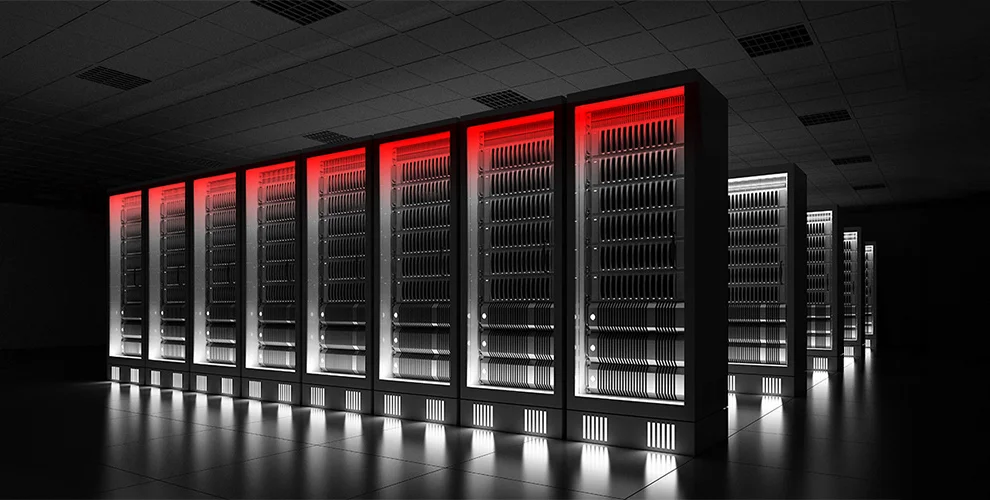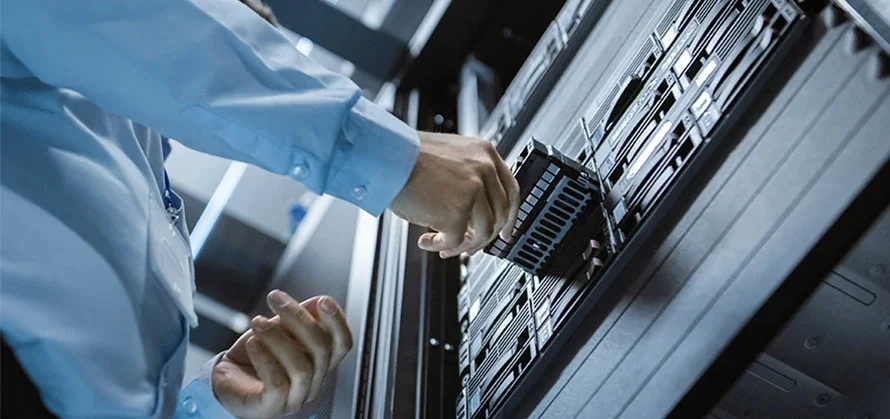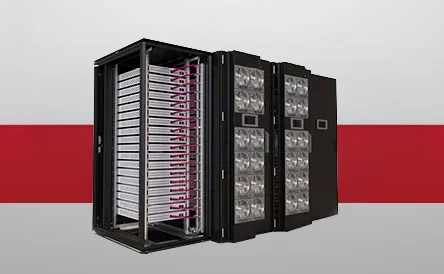Building Greener Data Centers
Electrification and digitalization are bringing both challenges and opportunities for sustainability. Electricity demand is expected to triple by 2050, electric vehicle (EV) and renewables infrastructure is expanding, and aging electrical infrastructure is rapidly being replaced to meet growing power needs. Along with these developments, demand for data is skyrocketing. As AI and machine learning applications explode, data centers are using more and more of the world’s power.
According to the International Energy Agency, a ChatGPT query requires 2.9 watt-hours of electricity compared to 0.3 watt-hours for a Google search. Additionally, the IEA estimates that global data energy consumption represents up to 1.5% of global electricity demand—other sources estimate that number even higher. AI has a role to play in all industries, but in order for AI to scale in a sustainable way, we need to build greener data centers.
An AI-Driven Paradigm Shift in How IT is Cooled
Thermal design power (TDP) is a measure of a chip’s power consumption and its cooling requirements. If a chip’s TDP is higher than the cooling system’s capacity, it will overheat, degrading equipment and hurting performance. Designing the appropriate cooling system is a critical part of operating AI data centers and offers sustainability improvement opportunities in multiple areas.
Traditionally, IT equipment in data centers has been cooled with air. In air cooling systems, the entire room is cooled using air conditioning, and fans push cooled air through servers, cooling the chips. However, air cooling cannot support the high cooling demands of AI data centers.
To protect IT and manage energy, data centers are turning to liquid cooling, which uses chilled liquid to capture and transport heat away from IT equipment. Liquid cooling is more effective because liquid has a higher heat transfer capacity than air and can be brought closer to the source of heat.
This reduces the energy required for cooling, leading to lower costs and a reduced environmental footprint. While the vast majority of data centers today are air-cooled, liquid cooling is expected to grow rapidly with the growth and expansion of AI.
Types of Liquid Cooling
To successfully build greener data centers, it is important to understand the different liquid cooling configurations. There are four main types:
Liquid-to-air
This cooling brings liquid cooling to IT equipment in air-cooled data centers by circulating chilled liquid through IT racks. The liquid is then cooled using a liquid-to-air heat rejection unit and recirculated. In closed loop liquid cooling, this method does not require new facility infrastructure since the liquid is in a closed loop. Liquid-to-air systems also circulate liquid in a closed loop, making them more water-efficient.
Air-to-liquid
This relies on air to cool the IT equipment itself but uses chilled liquid to cool the airbefore it is released back into the room. This isolates server heat to the rack and reduces the need to overcool air in an entire data room. In these systems, facility liquid is required in order to cool liquid loops inside rear door coolers placed on the backs of servers.
Direct-to-chip
This cooling efficiently removes heat at its source by utilizing a heat sink placed directly on the chip itself. This technology can be paired with liquid-to-air coolers or use facility liquid, but careful design is absolutely critical since liquid is in close proximity to IT systems.
Immersion
This cooling sees entire servers immersed in a cooled dielectric liquid. This method of cooling not only manages heat in IT but also protects it from dust and humidity. Immersion cooling can be extremely energy efficient, but it comes with its own sustainability considerations, including the production of dielectric fluid.
At the center of any liquid cooling system is the coolant distribution unit (CDU). Depending on the cooling approach, CDUs can either be stand-alone pieces of equipment or integrated into other equipment. CDUs serve as the heart and the brain of any liquid cooling system, using advanced control algorithms to precisely pump chilled liquid through the entire cooling loop at an optimized rate and temperature.
Deploying Liquid Cooling to Improve Sustainability
Power usage effectiveness (PUE) is a key sustainability metric for data centers. PUE is calculated by dividing the total amount of energy used by a data center by the amount of energy used by its computing equipment. Lower PUE means a more efficient data center. For a variety of data center configurations, liquid cooling can be used to lower PUE.
There are too many variables to say that one configuration is always better—the most important consideration is making sure that the cooling solution fits the problem at hand. For existing data centers that need to rapidly scale up their cooling capabilities to support AI chips but do not have time for an extended retrofit or remodel, liquid-to-air cooling systems can be a great choice.
If a data center is seeking to improve its efficiency, but is still running air-cooled chips, air-to-liquid cooling can accomplish that goal. When data centers are preparing to sustainably power advanced high-performance computing, they might be ready for immersion cooling.
Engineers can also look beyond the data center to deploy liquid cooling. Battery energy storage plays an important role in the data center ecosystem by providing backup power. Liquid cooling can be applied to this solution as well, cooling batteries more efficiently and helping them achieve optimal performance.
Becoming an Advocate for Green Data Centers
Tech leaders need to continue encouraging their teams to push the boundaries of liquid cooling technologies and keep improving them to enhance both efficiency and reliability. Engineers can also look for creative ways to reuse data center heat once it has been transferred to warm liquid, including freeze protection and ice melting for data center exteriors, and even heating homes and businesses. Beyond hardware innovation, there are opportunities for applying advanced control algorithms to enhance cooling efficiencies.
Most importantly, technology leaders need to keep advocating for greener data centers. As computing technologies continue to evolve, developing more sustainable ecosystems around them will be one of the most important challenges for tech leaders to conquer.
With a focus on reliability and efficiency, nVent is committed to providing cutting-edge cooling solutions tailored to meet the demands of modern data centers and high-performance environments. Learn more about nVent’s comprehensive portfolio and expertise, including data center solutions: Data Centers and Networking | nVent DATA-SOLUTIONS


